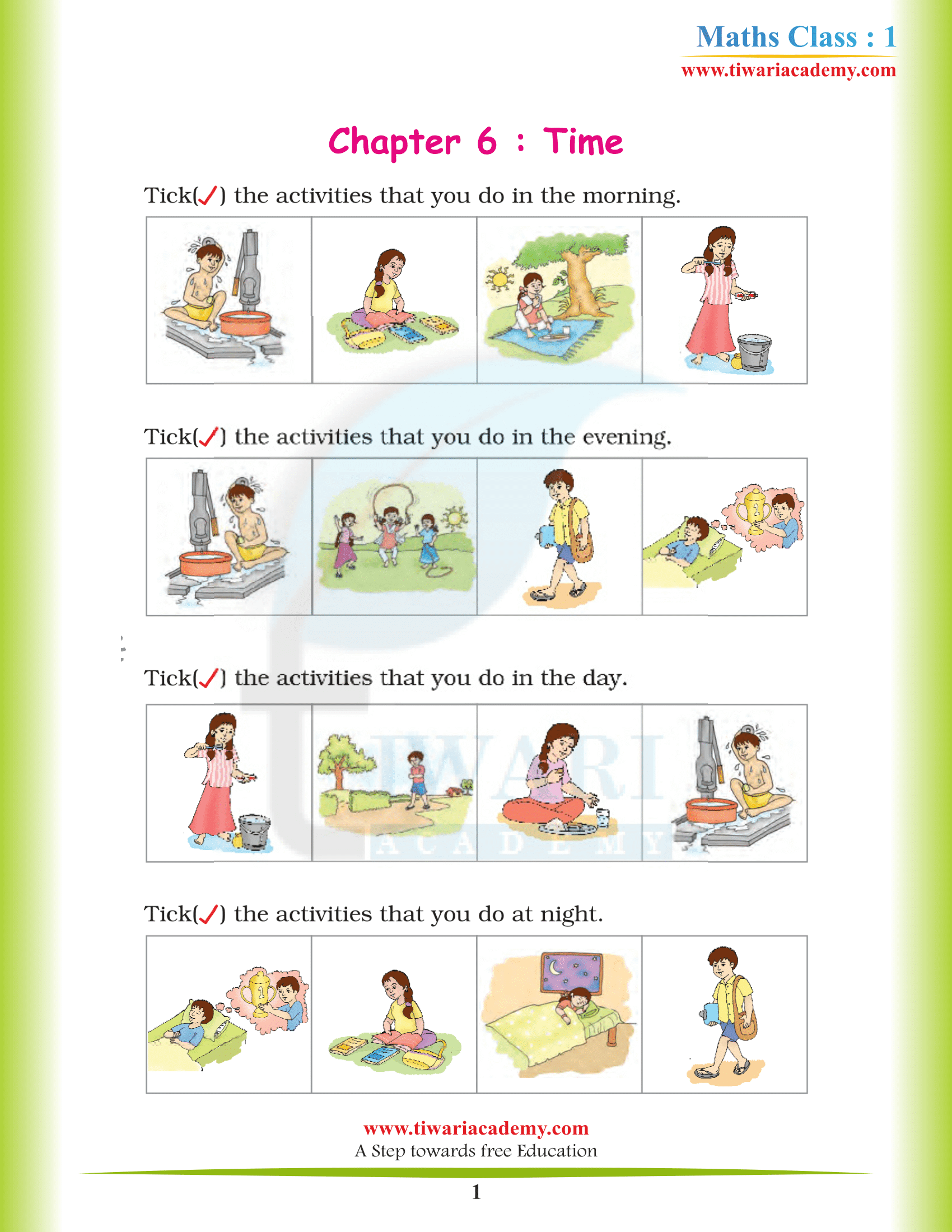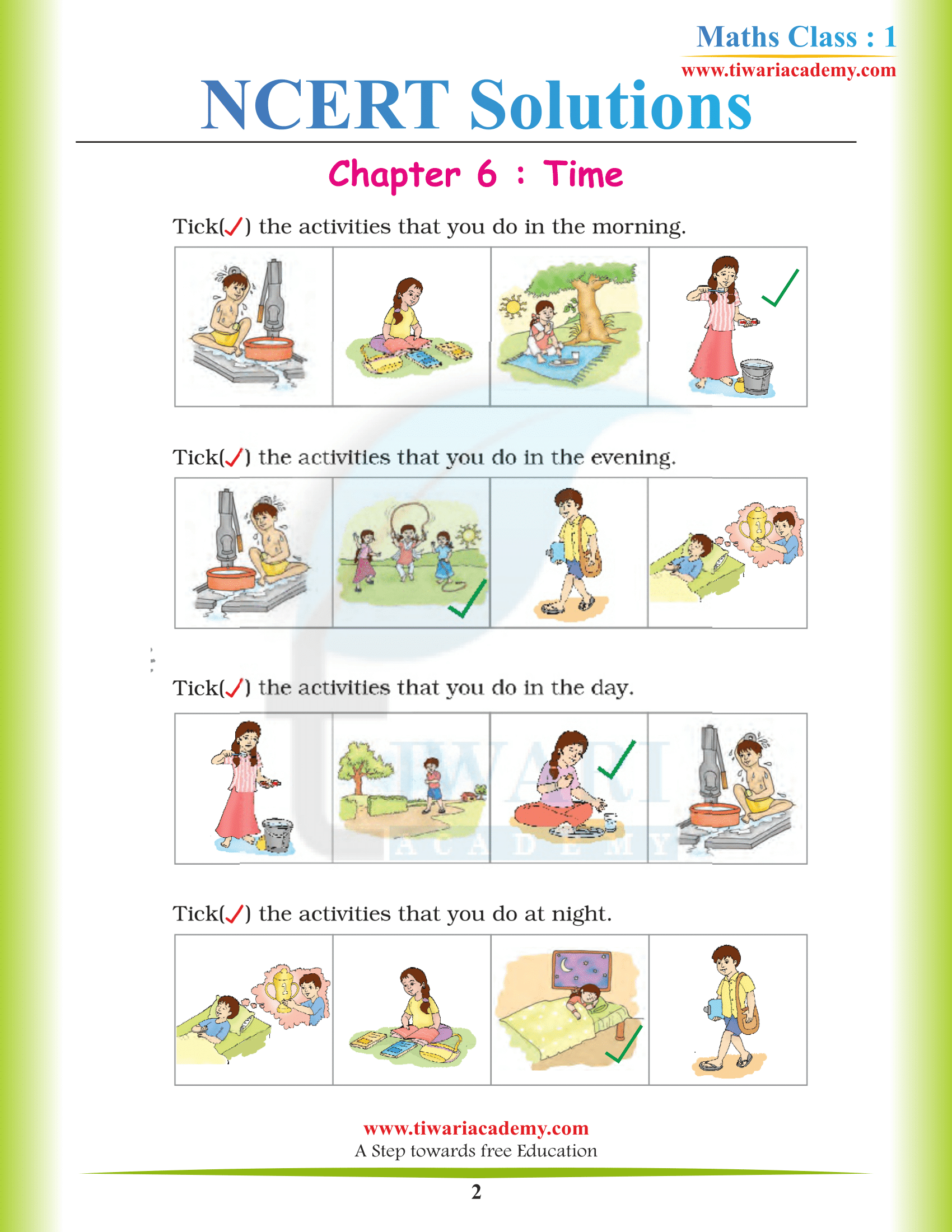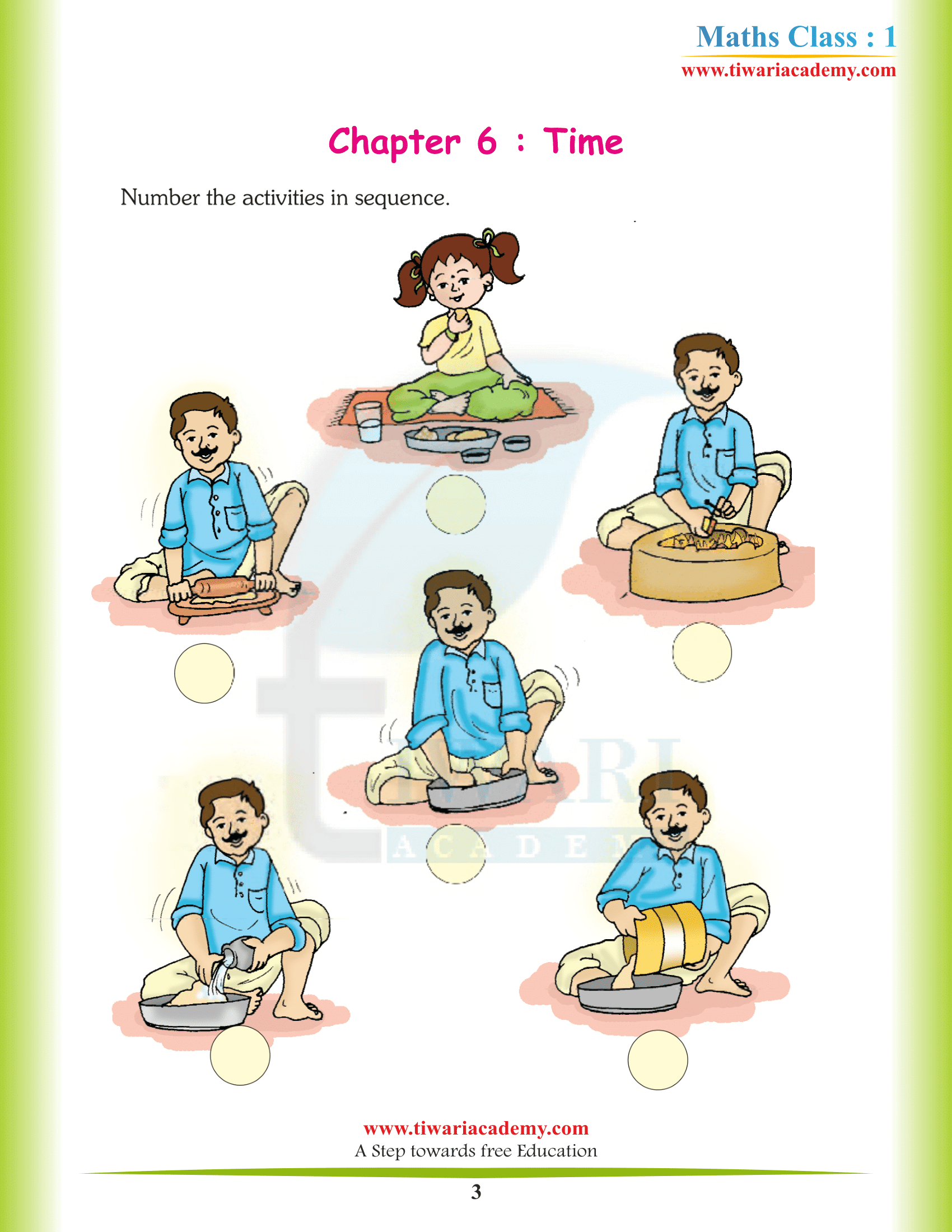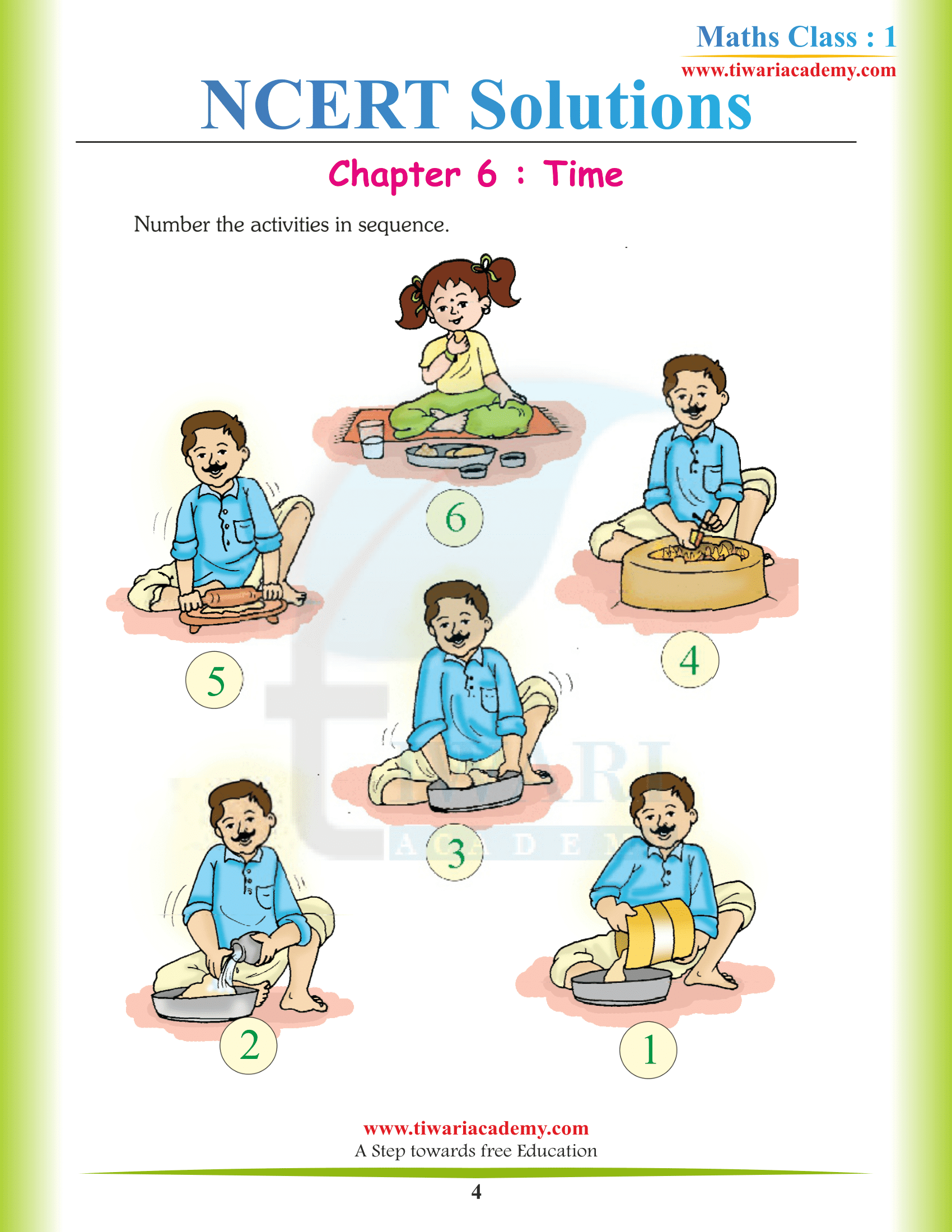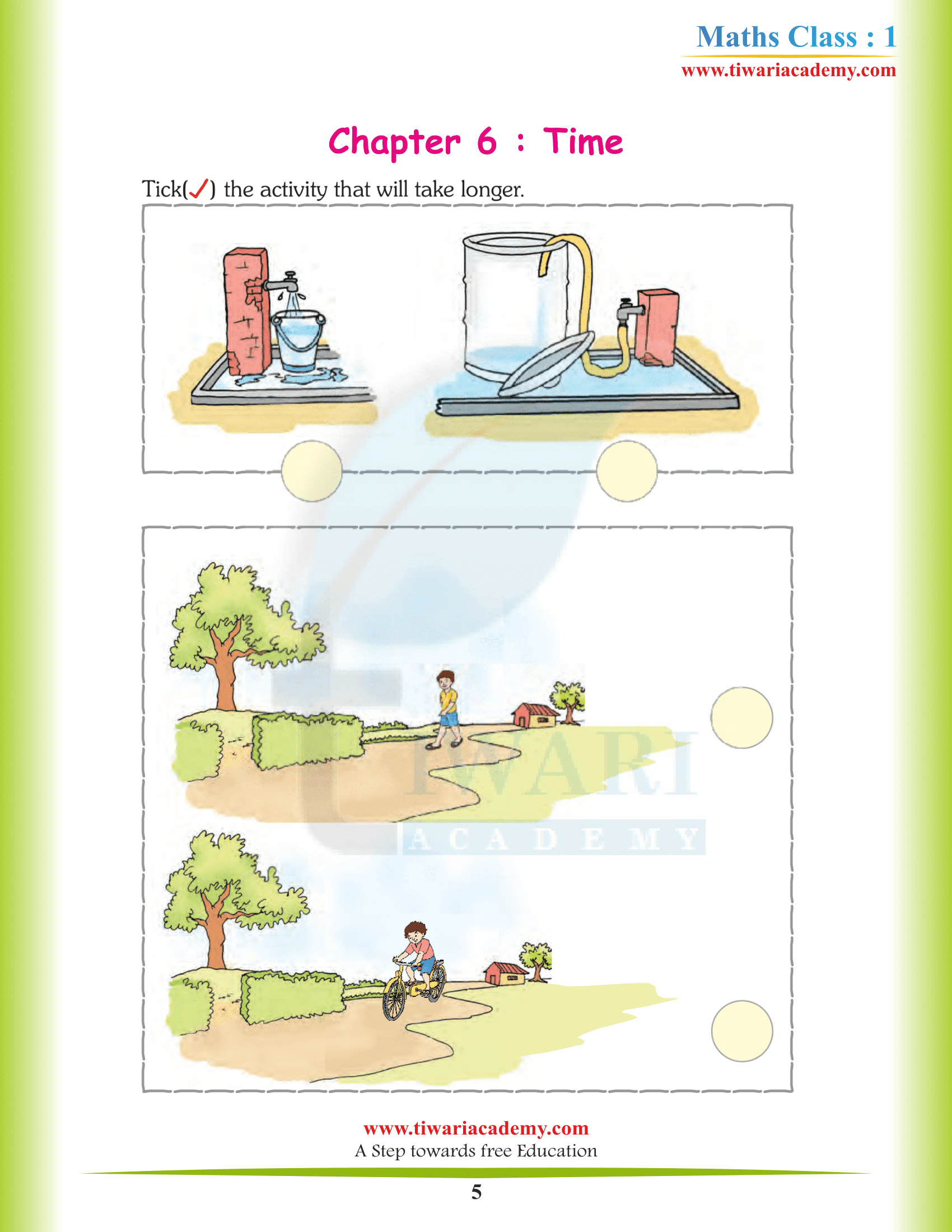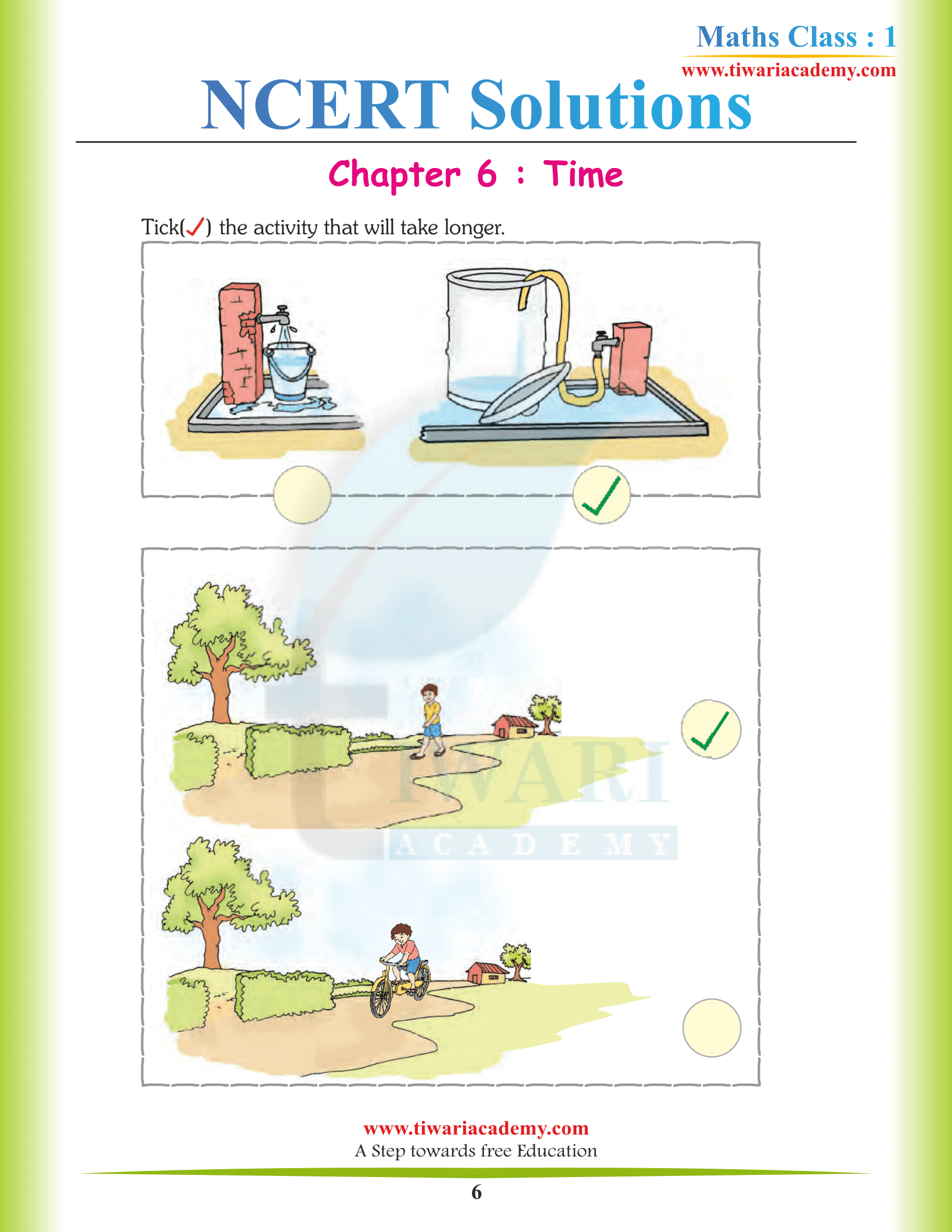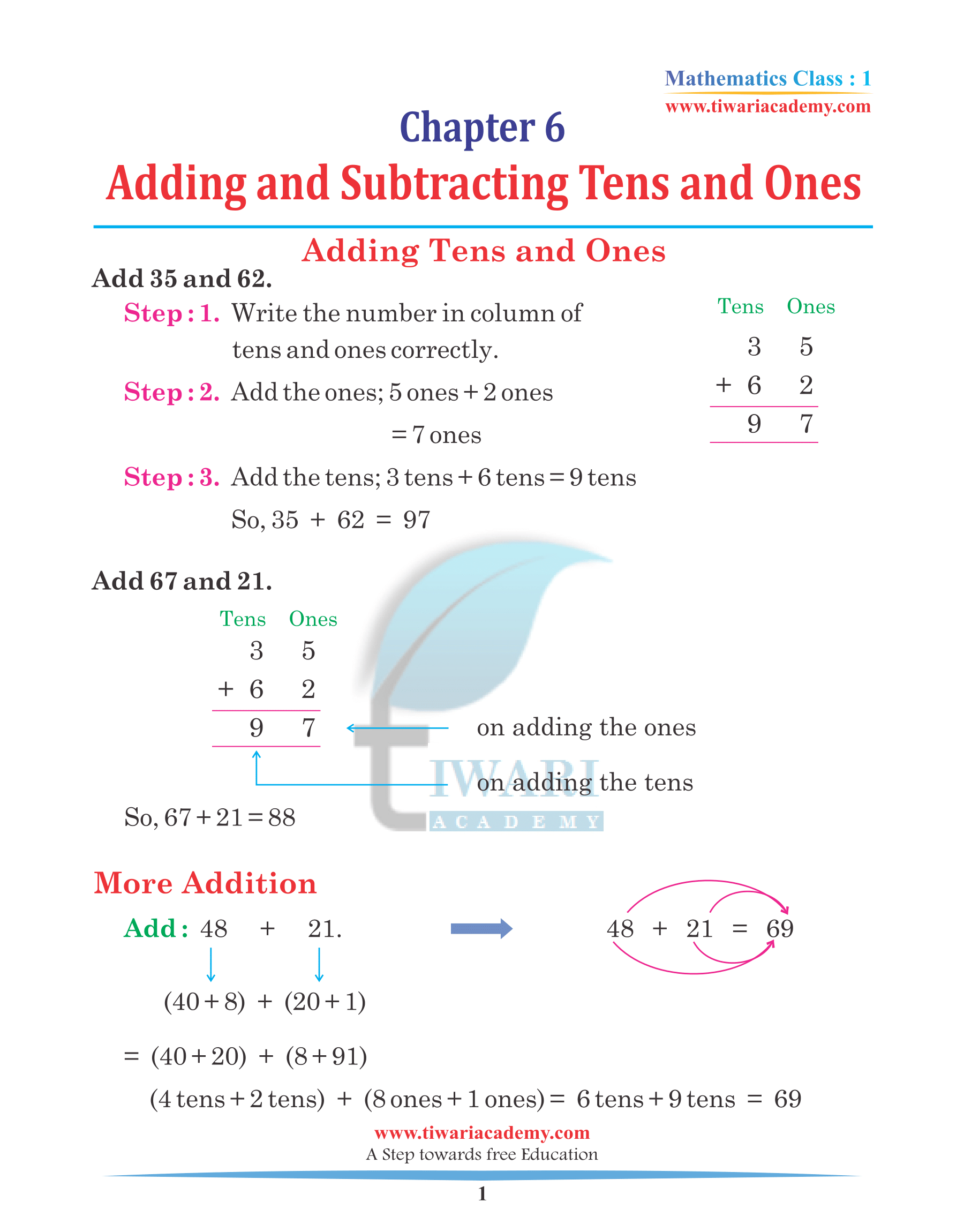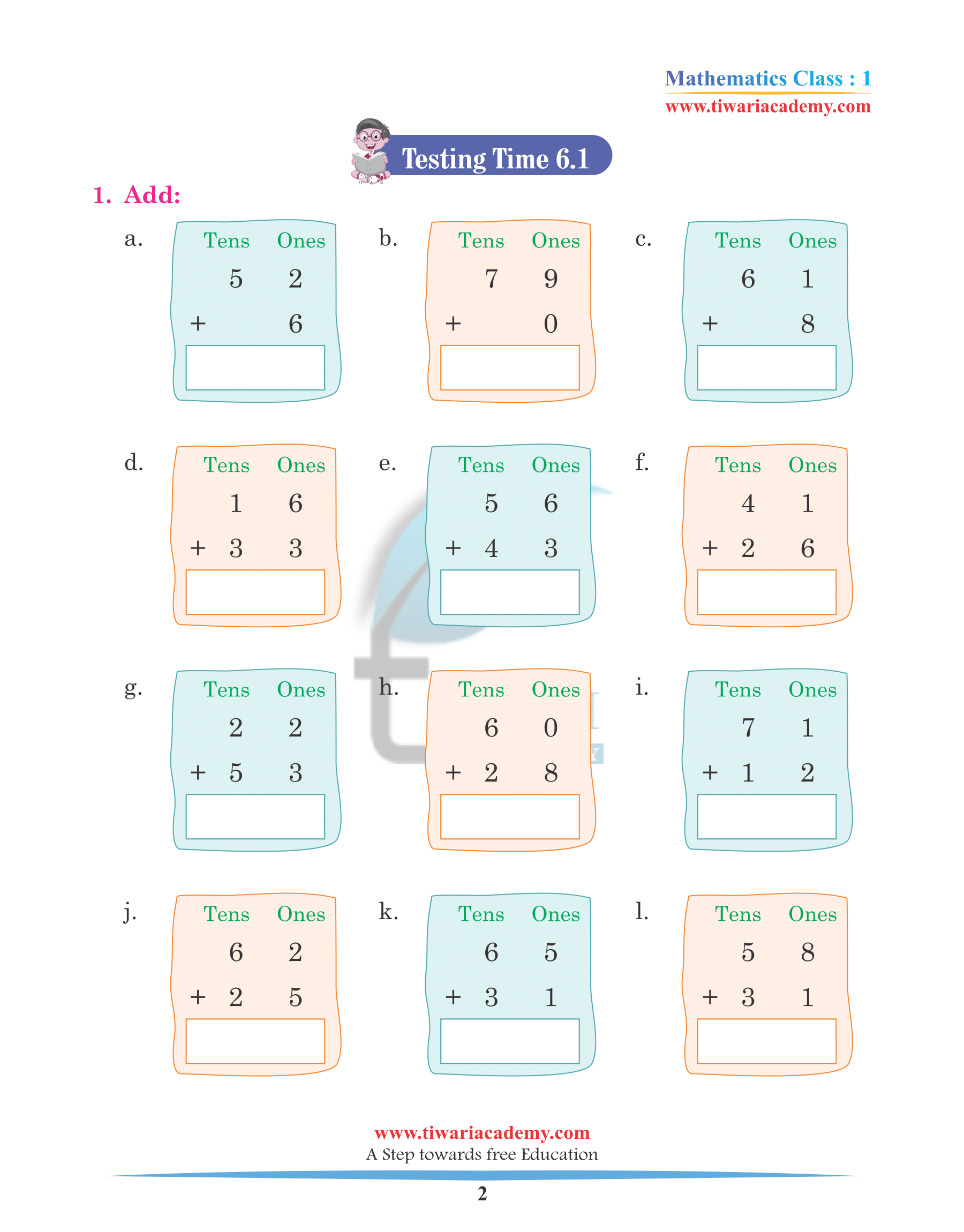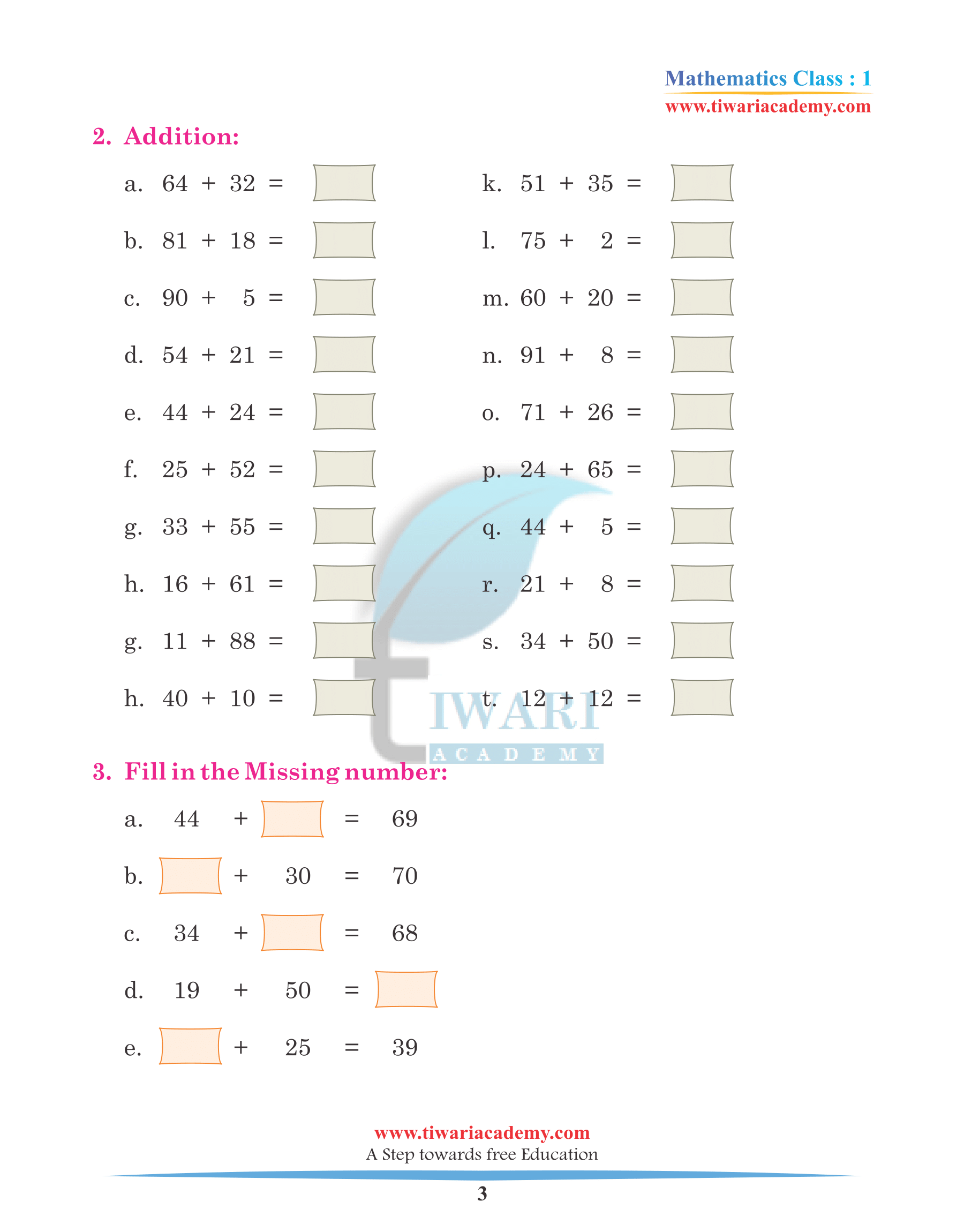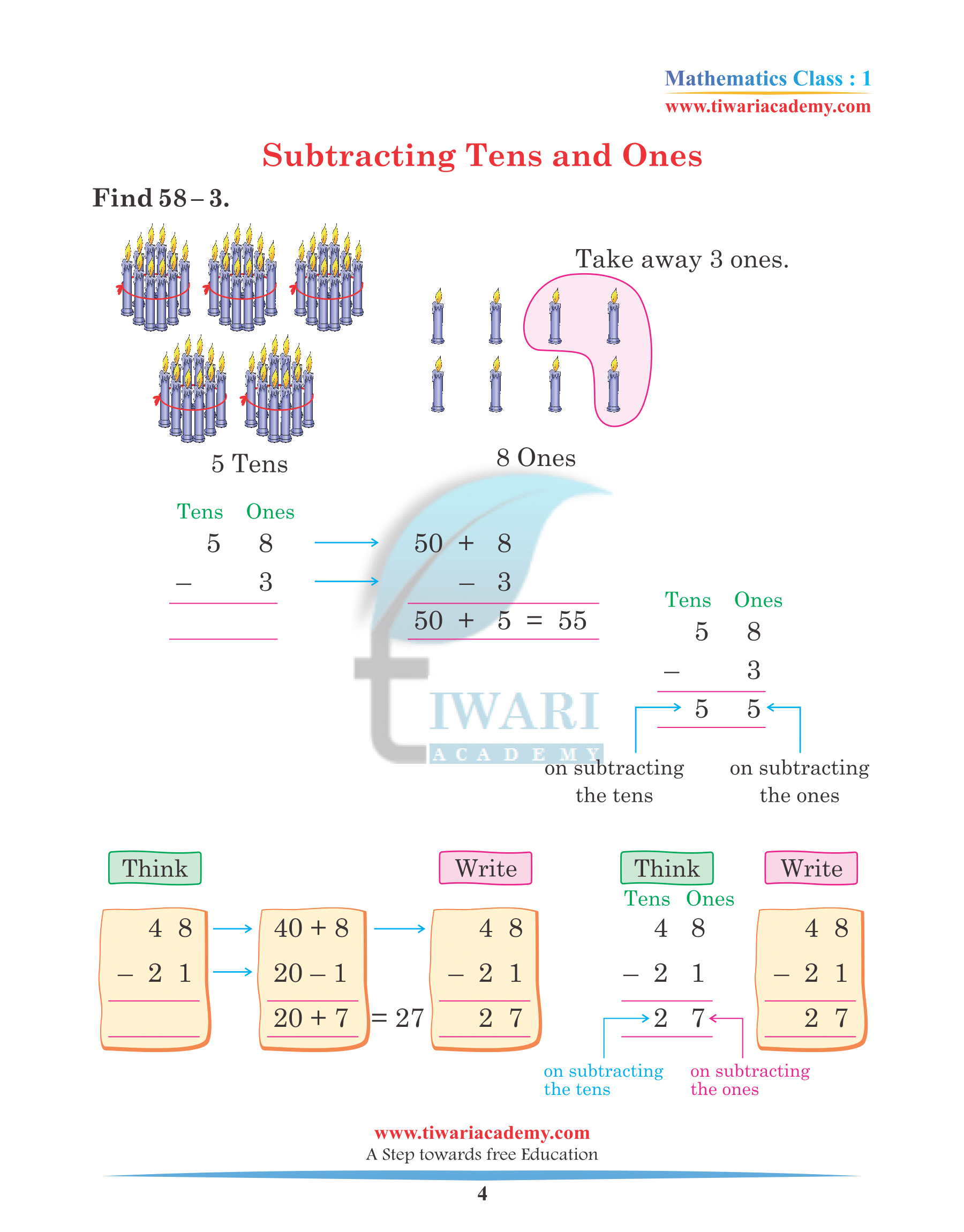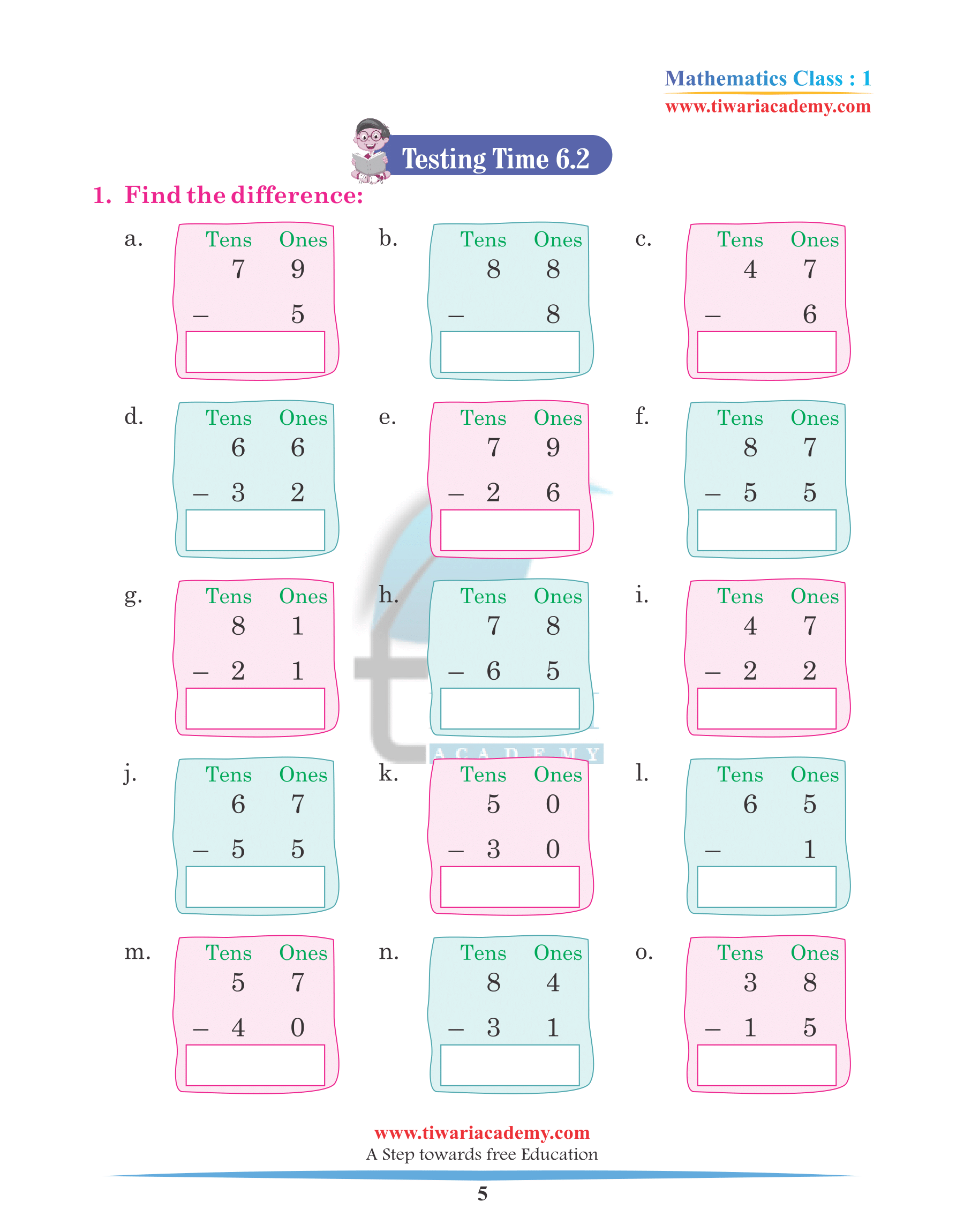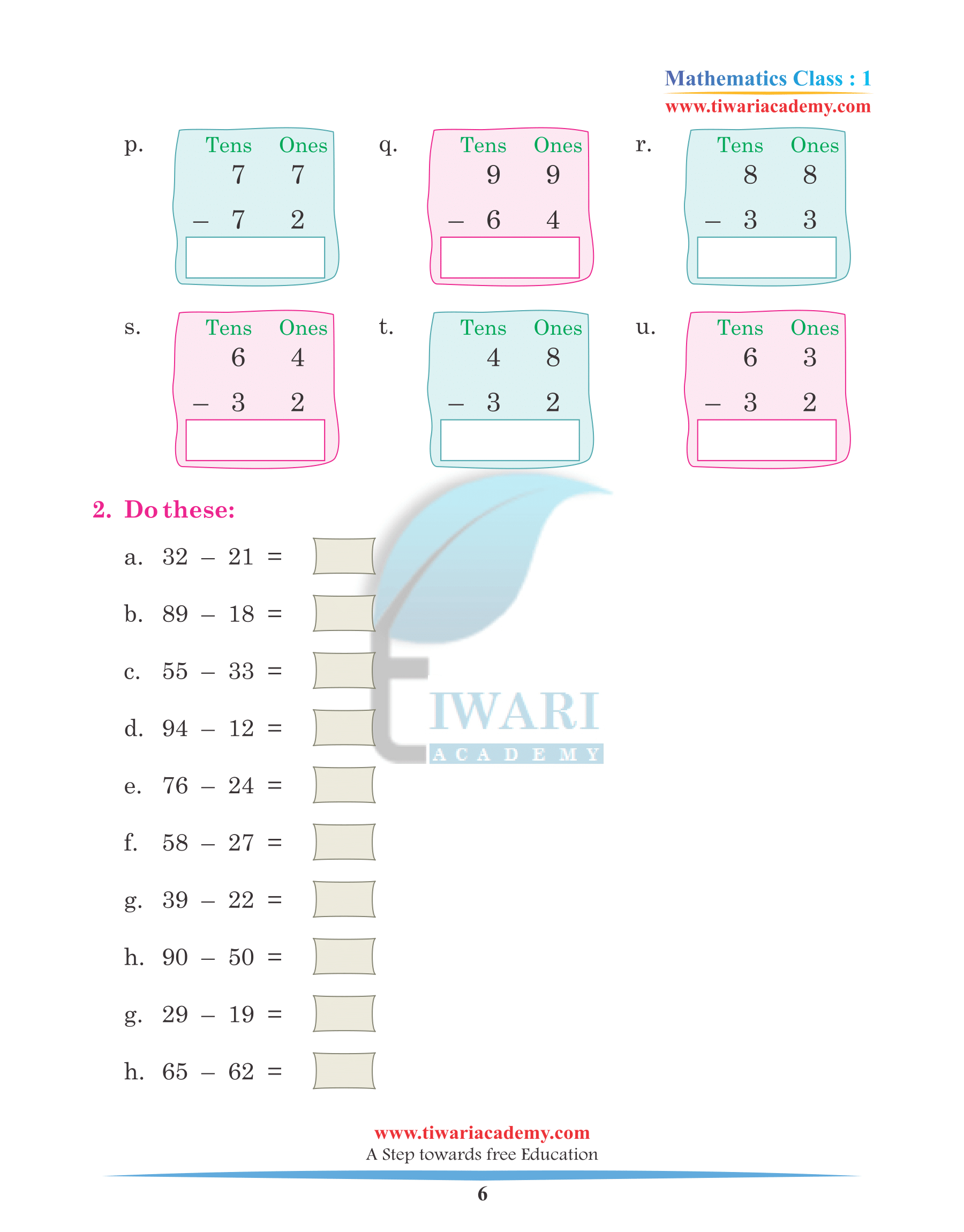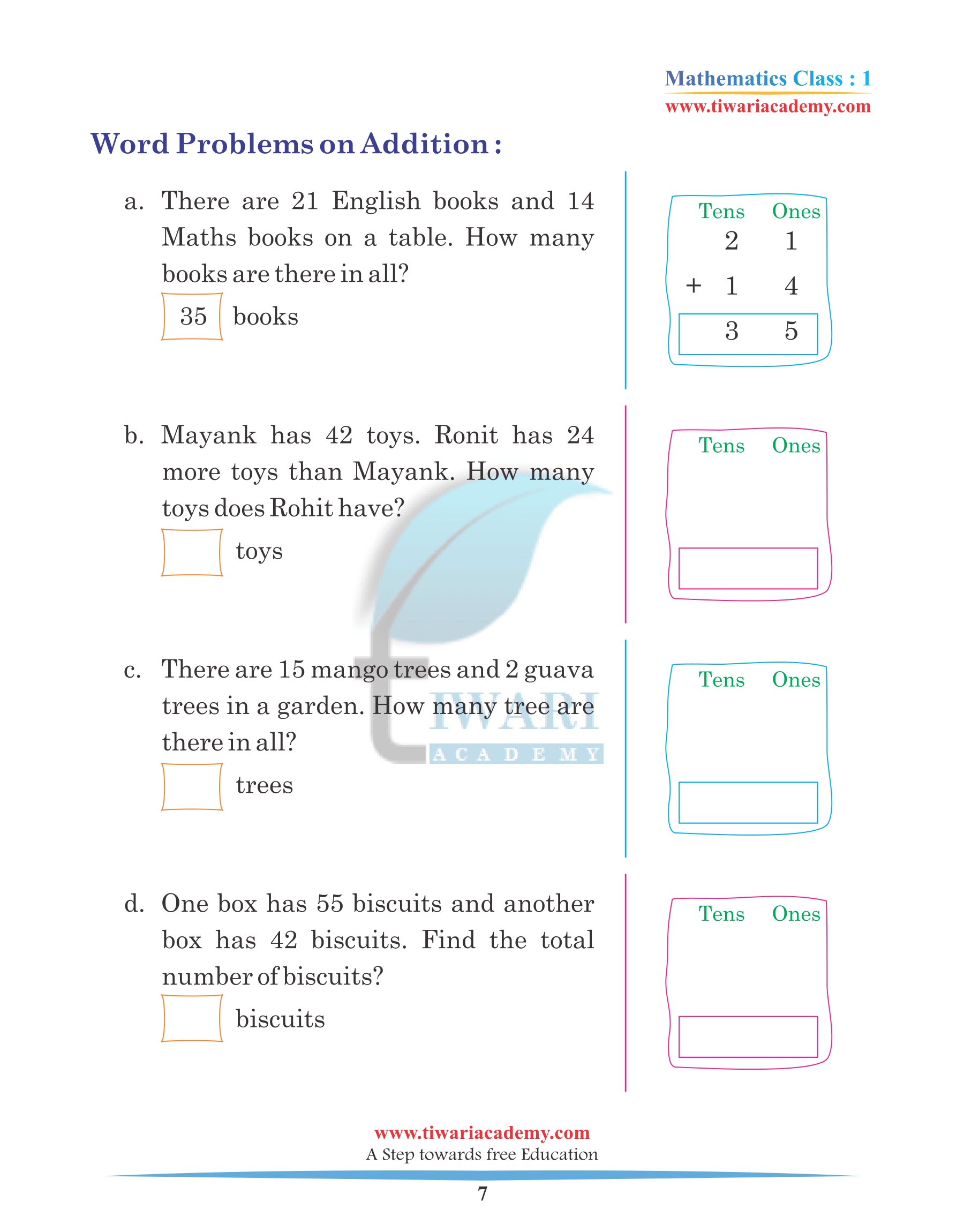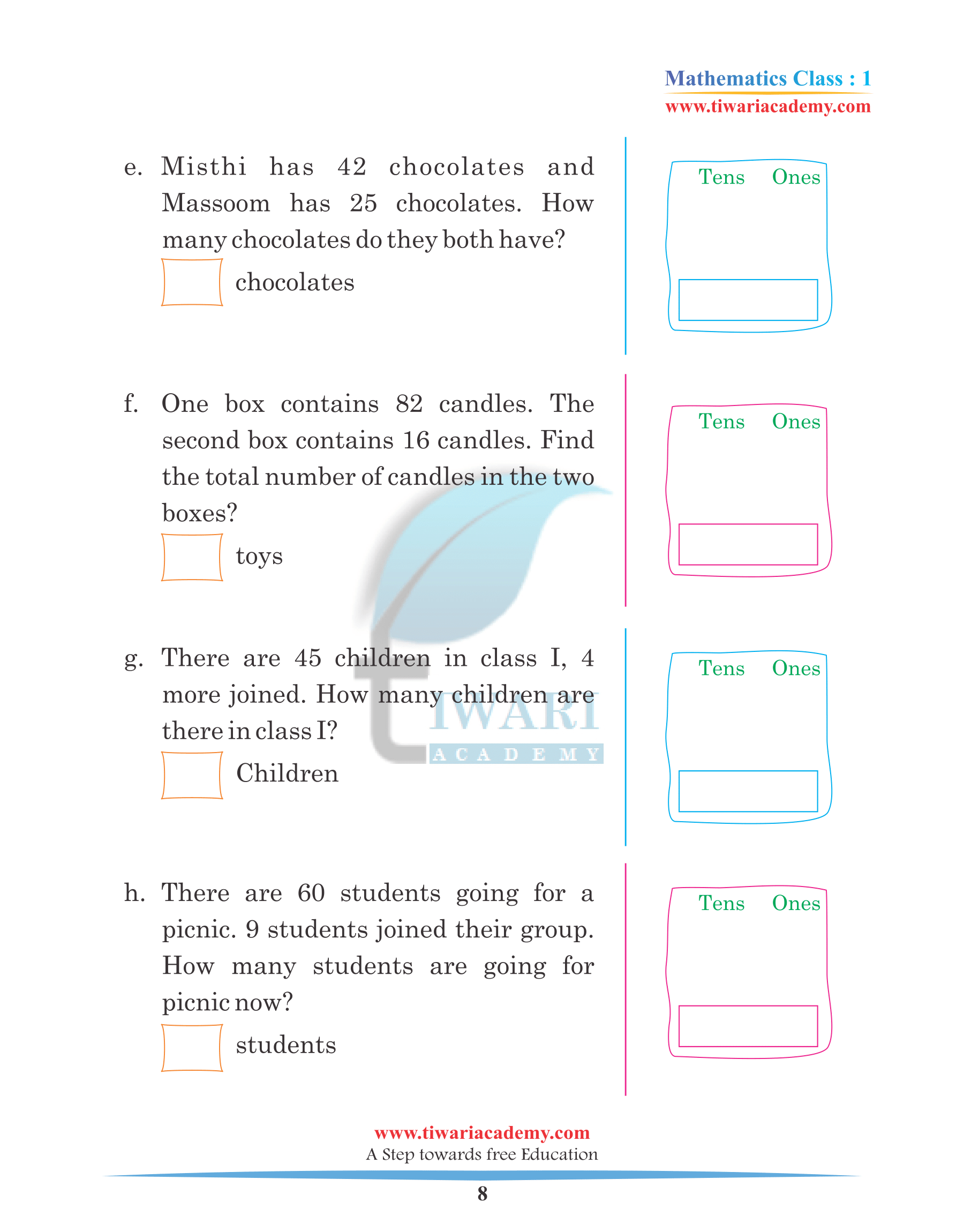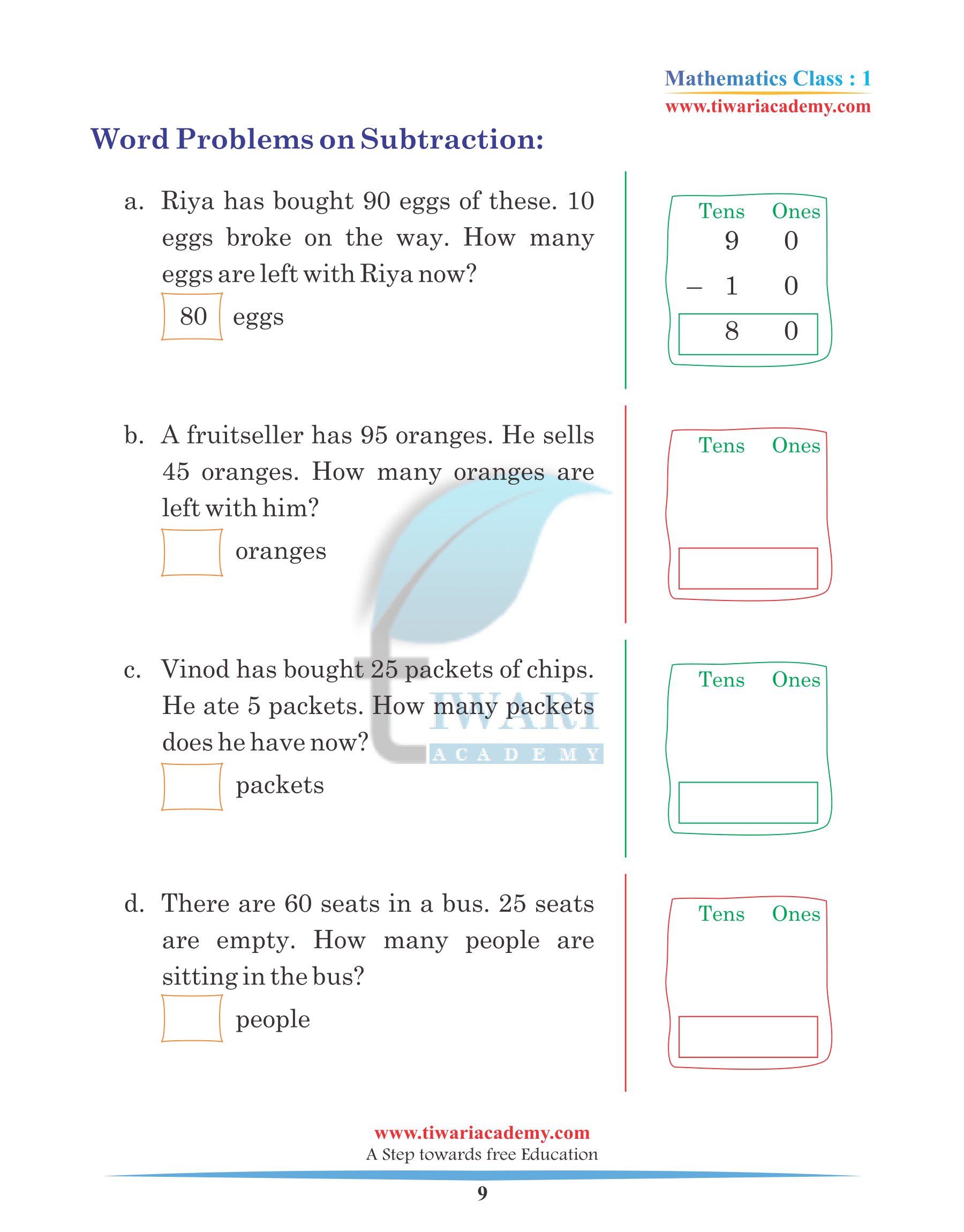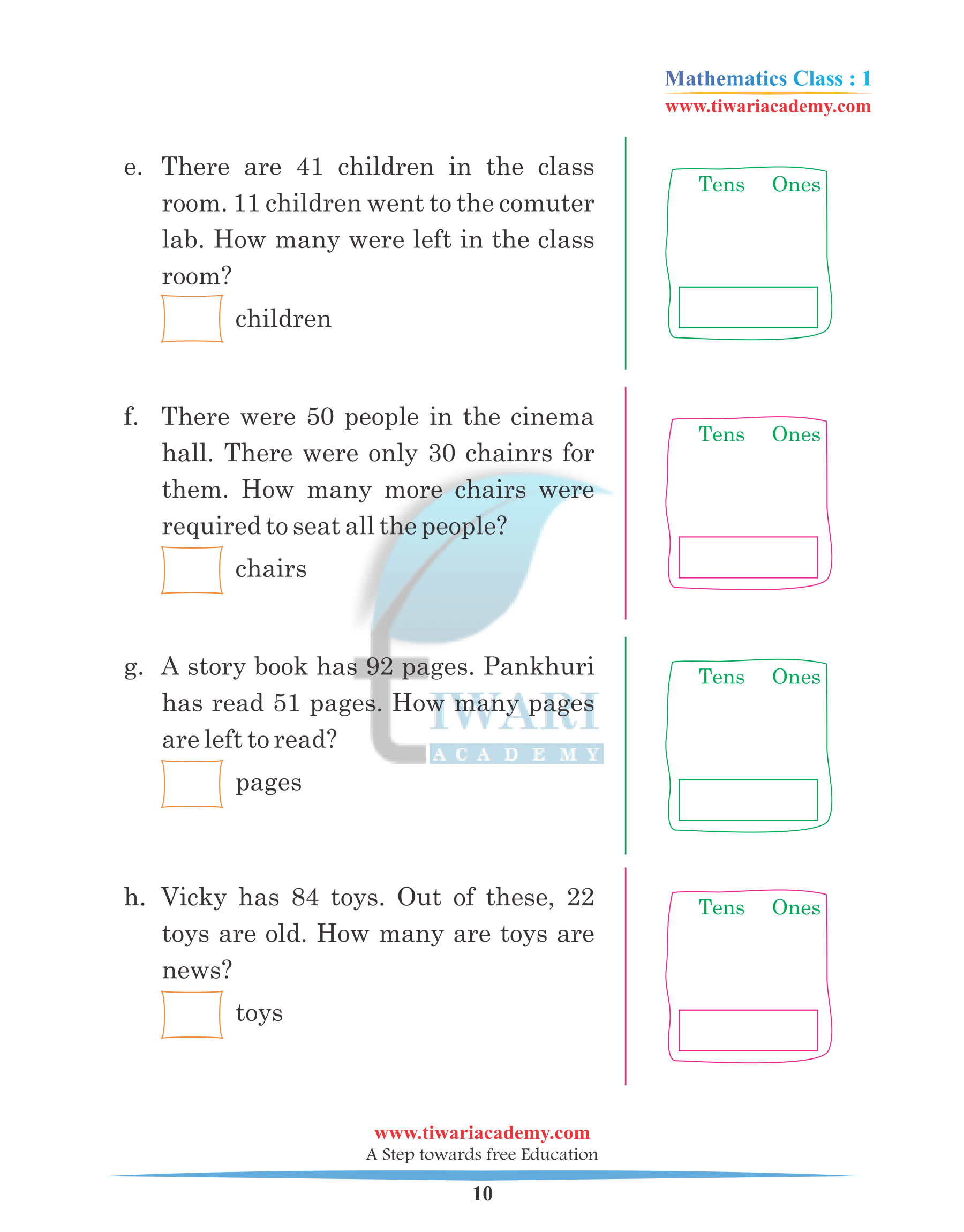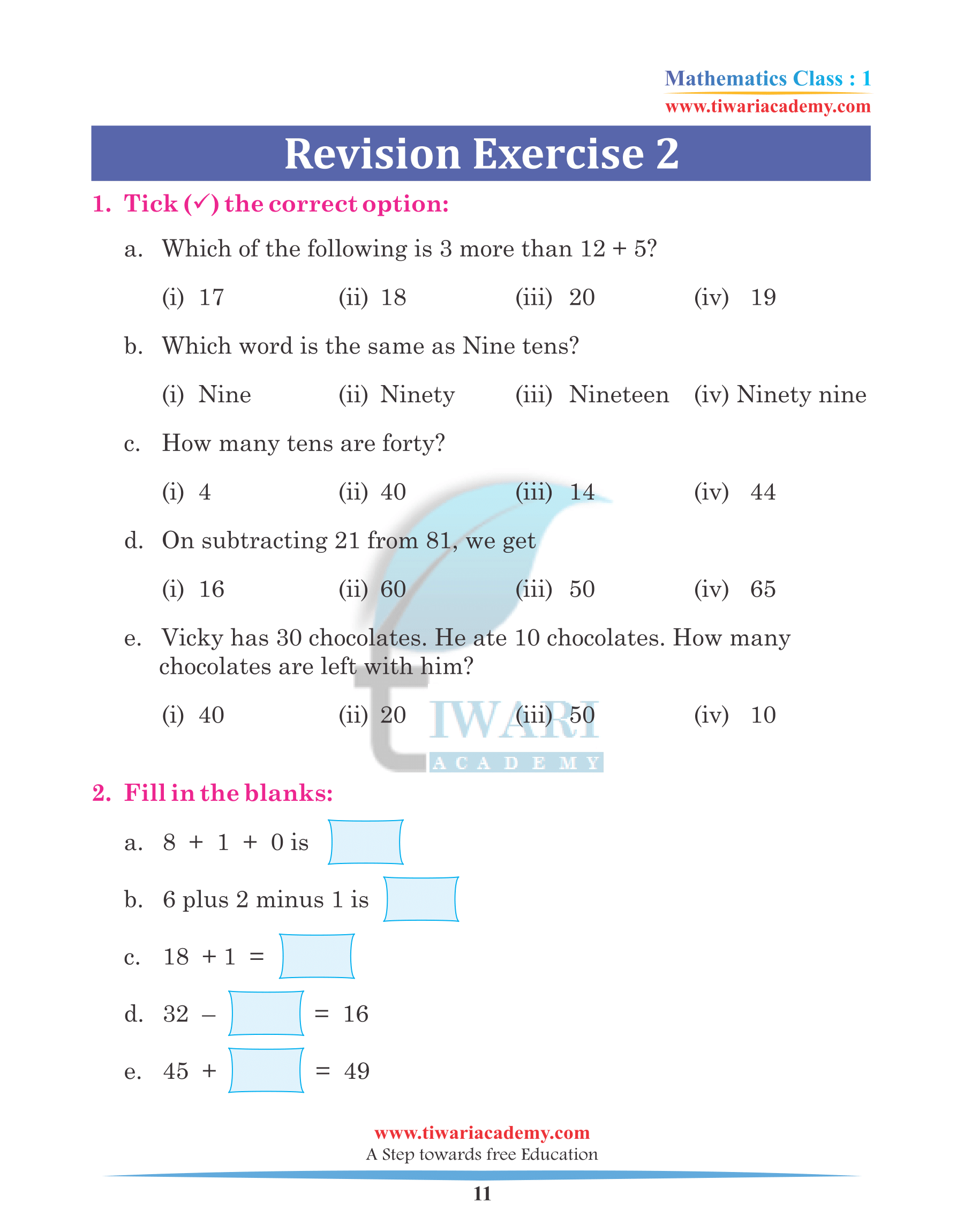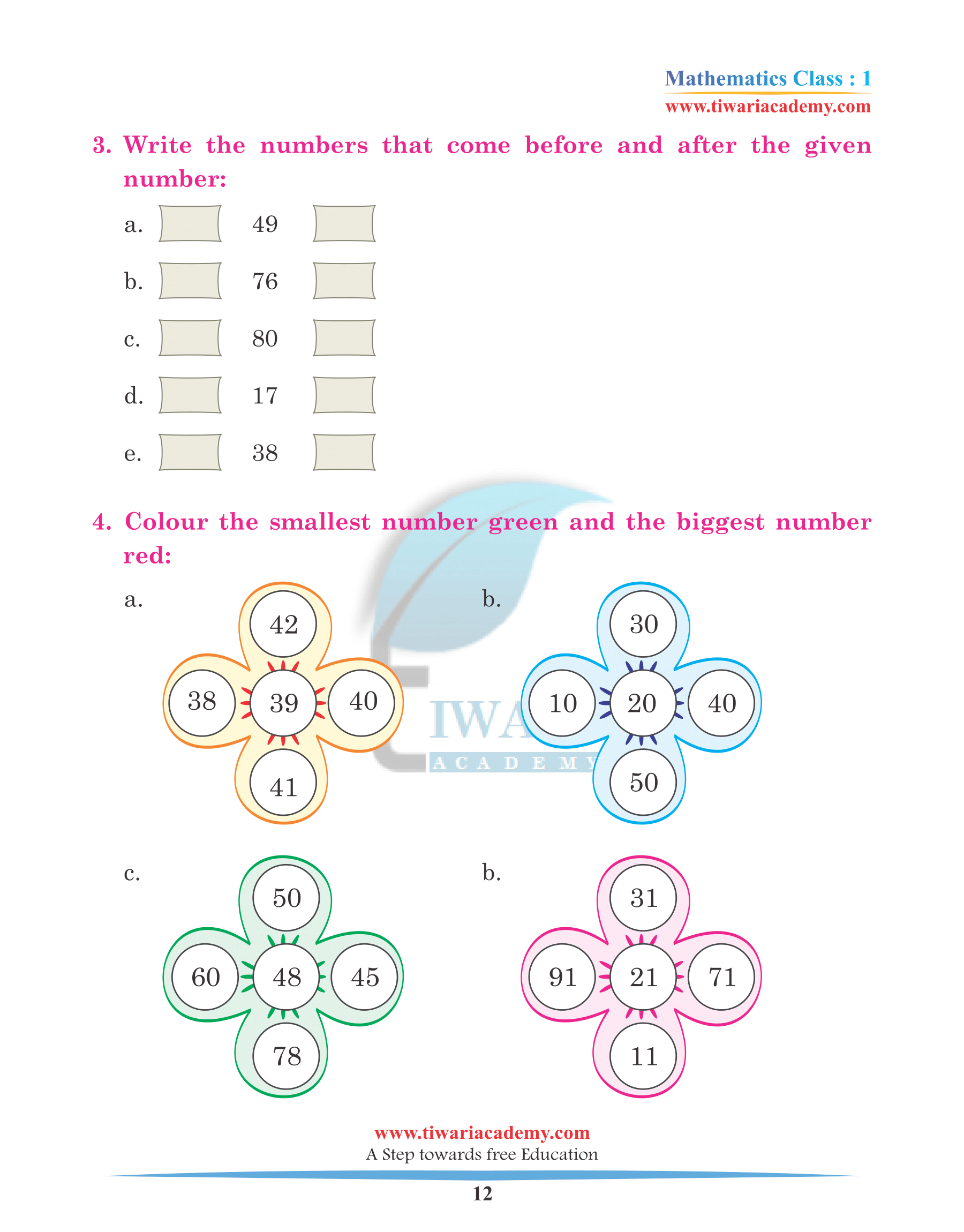NCERT Solutions for Class 1 Maths Chapter 6 Time in Hindi and English Medium extra questions based on 6th chapter of 1st Mathematics updated for academic session 2025-26. There is a practice revision book which also provide an ample questions for revision of chapter and preparation of class test and exams. All the questions of NCERT Textbook and revision book are solve in simple format, which is easy to understand.
Class 1 Maths Chapter 6 Time
Teaching about Time to Class 1 students can be a delightful experience if you employ a combination of hands-on activities, storytelling, and interactive exercises. Here are some simple and engaging ways to teach class 1 Maths chapter 6 Time.
NCERT Solutions for Class 1 Maths Chapter 6
Story telling including different time interval help to learn about the time. Begin with a simple story involving the daily routine of a child. Discuss activities like waking up, having breakfast, going to school, playing in the evening, and sleeping at night. Associate these activities with specific times to introduce the concept of a day.
Make a clock using a paper plate. Label the numbers and use movable hands. Allow students to create their own clocks. They can colour them and add stickers. Practice setting different times on the clock. Discuss the routine of a typical day. Let students draw or paste pictures representing different activities and then label the time beneath each.
Remember, every child learns at their own pace. The key is to be patient, use a variety of teaching tools and methods, and provide ample opportunities for practice. Over time, Class 1 student will become more confident in their ability to tell time and solve the questions of 1sth Maths chapter 6.
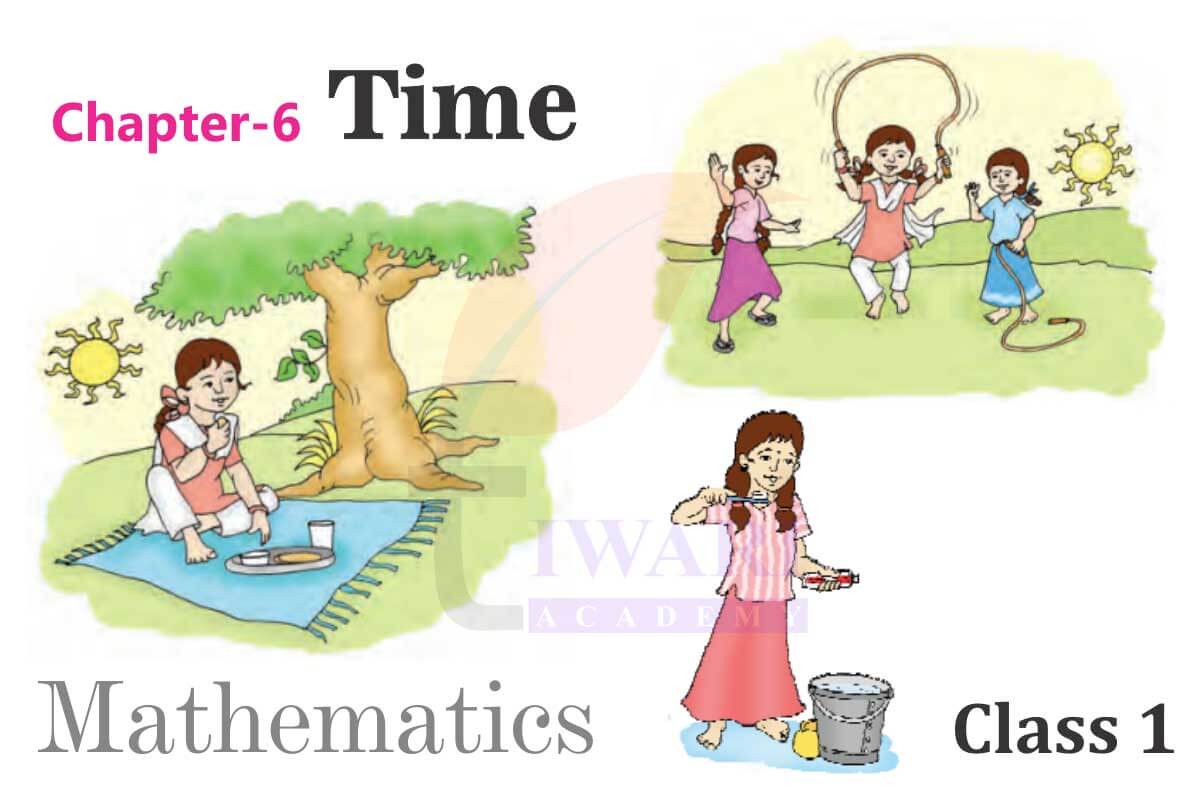
Sampada’s Day
We all understand what we do day and night so this chapter is about the time of the day when and what we do according to time. So in this chapter, you need your skills of recognizing and works you do at what time of the day.
Similarly, there are certain activities that you have to see what you can do first and what needs to be done first so that you can get the desired results. Look into the beautiful colors in the picture and enjoy learning.
Use digital apps or games that focus on teaching time. There are several available tailored for young learners. Teach them about the words like morning, afternoon, evening, and night. Introduce terms like ‘o’clock,’ ‘half past,’ and ‘quarter past/to’ as they progress. Use worksheets that allow students to draw the hour and minute hands of the clock according to the given time or vice versa.
Set aside a specific time each day to practice telling time. Ask them throughout the day, “What time is it now?” and let them try to tell you. Encourage them to look at clocks around the house and tell the time. Set alarms for specific routines and ask them to guess the time when it rings. Continually review what they’ve learned. Celebrate their achievements with positive reinforcement, like stickers or a small treat when they get the time right.
Morning Schedule
1. Get up for school
Sampada get up early in the morning at 6 ‘o’ clock.
2. Eat breakfast
Before going school see eat her breakfast.
3. Read a story in school
In school she read story book.
Use Analog and Digital Clocks to teach about time to class 1 students. Show students both types of clocks. Discuss the differences and similarities. This will prepare them for the digital world while understanding the basics through analogy. There are many catchy songs and rhymes available online that focus on teaching time. These can make learning more enjoyable and memorable for young students.
Show them a digital clock and explain how it represents the same time as an analog clock. Compare readings from both to cement understanding. Use stories where characters do activities at specific times. This not only reinforces the concept of time but also improves their listening skills and imagination. Introduce days of the week and months of the year. Discuss concepts of yesterday, today, and tomorrow.
Day Time Table
Eat lunch
1. There is lunch break in school at that time Sampda eat her lunch.
2. Return home after school.
Set specific times during the day for certain activities, such as snack time or reading time. Occasionally ask, what do we usually do at this time? Use flashcards with different times on them. Students can show the time on their paper clocks when you show a card. Use a sand timer or stopwatch to show short time intervals.
Once they’re comfortable with full hours, introduce the concept of half-past the hour. Discuss how 30 minutes is half of 60 minutes, using visuals like dividing a circle or a pizza into two parts. Relate time to their daily activities: breakfast at 8 o’clock, lunch at 12 o’clock, bedtime at 7 o’clock, and so on. This connects abstract concepts to tangible events in their lives. Play matching games where they match a time with a routine activity. Use apps or online games designed for young children to practice telling time.
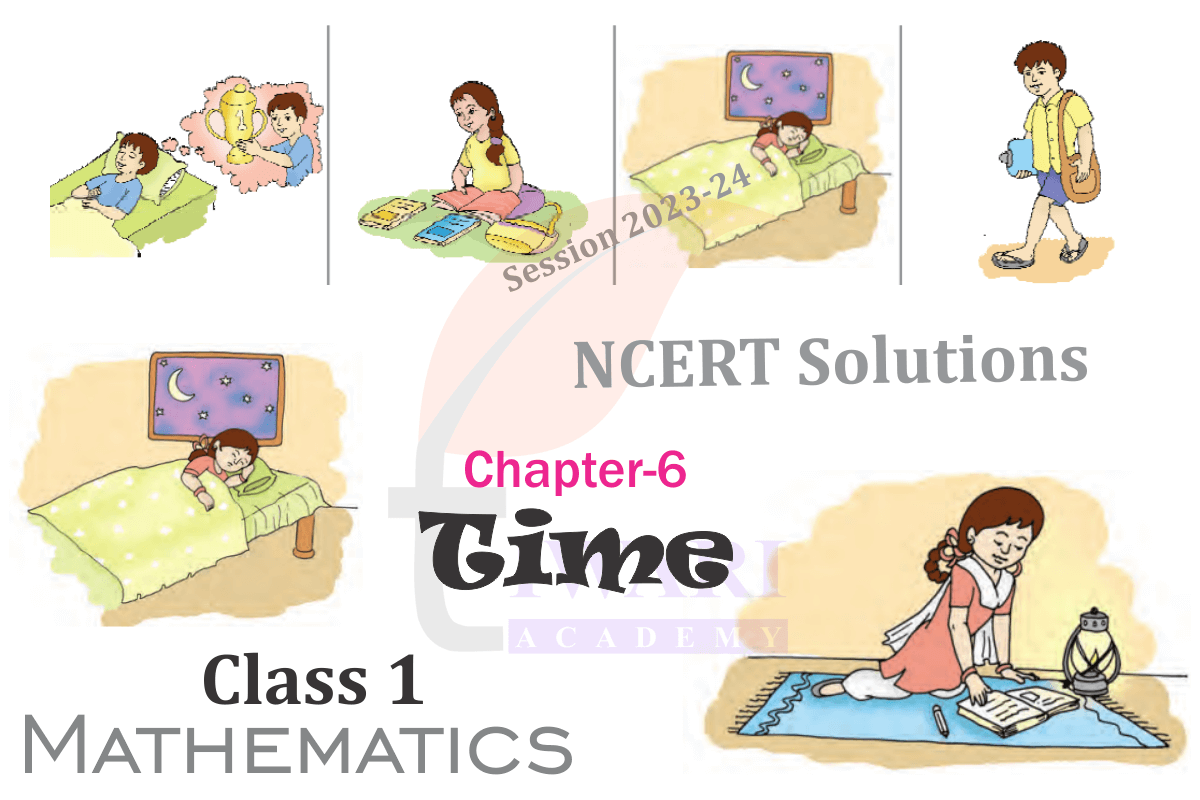
Evening Time Table
1. Play
After school she play different games with her friends.
2. Study
At evening she complete her homework.
7. Go to bed
She did her dinner at 8:30 P. M. and after that she go to bed at 9:30 P. M.
Let students guess how long a minute is, then measure and discuss. Along with teaching hours and minutes, introduce days, weeks, and months using a classroom calendar. Talk about yesterday, today, and tomorrow. Remember, repetition and consistency are key. The more students practice, the more confident they’ll become. Incorporate time-related activities into their daily routine, and soon they’ll be comfortable telling time on their own.
Reinforce the idea that the short hand shows hours and the long one shows minutes. Ensure that they can recognize and count numbers up to 12 since these are the numbers on a clock. You can use games, songs, and flashcards to make this process interactive and fun. Use a toy clock or a paper plate clock with movable hands. Show them how to point the hour hand to numbers and say the corresponding time, focusing on ‘o’clock’ times first.
How come unit 6 of class 1st Math could be helpful for the children?
Students might or might not be aware of what to wish and when to wish or eat on time certain things like lunch breakfast and dinner. This chapter will teach them what to see and how to see what should be done it is different than other chapters given in the math.
Teaching a Class 1 student about time requires patience, repetition, and engaging methodologies that cater to their developmental stage. Here’s a step-by-step approach to help first graders grasp the concept of time. Begin by discussing the difference between day and night. Talk about activities they do during the day vs. the night. Show them an analog clock and introduce them to its parts: the face, the numbers, the hour hand, and the minute hand.
Do the children of class 1st learn how to watch time after reading chapter 6?
The chapter is not focused on teach them how to see time but it is for them to learn what to do at what part of the day. Such as playing in the park, having meal of the day and taking showers and sleep.
Do you think chapter 6 is relevant for the 1st class students of maths?
The chapter will teach them something new about the part of the days and this could be a relief for them to learn something new and also make them curious to learn about how to see and understand time.
